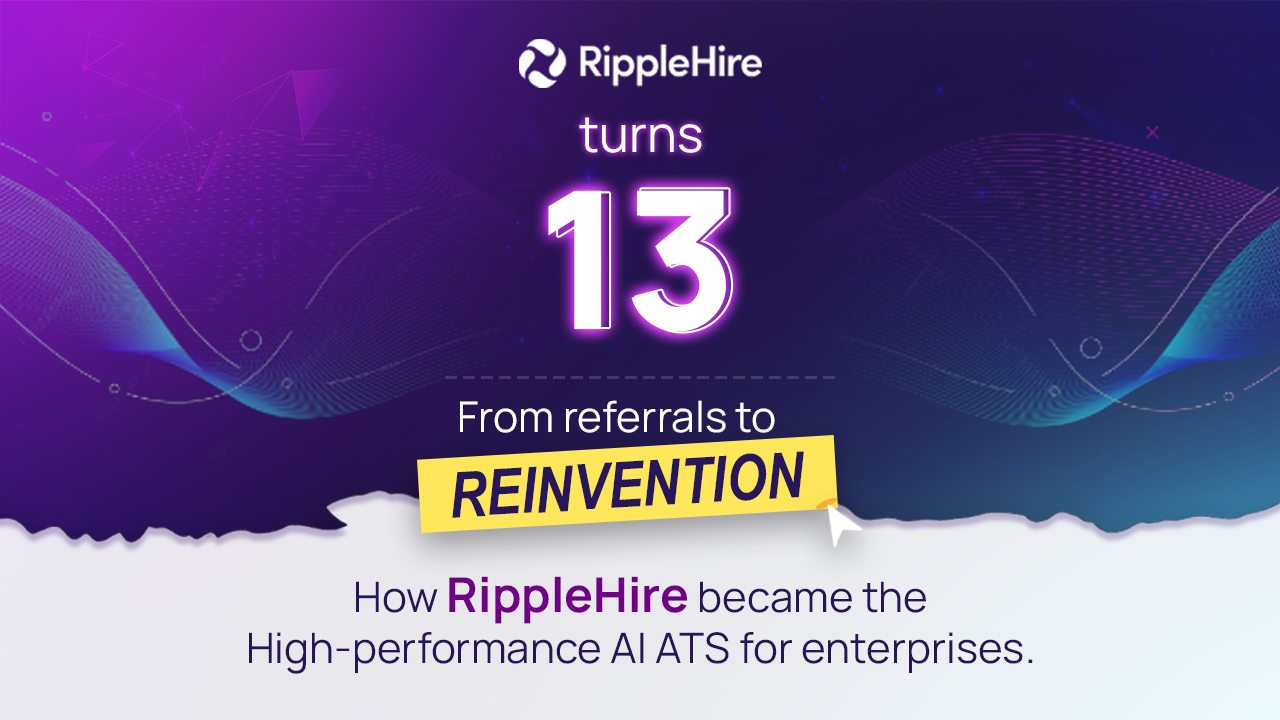The Role of Assessments in Scaling Hiring Drive Efficiency
Walk into any large hiring drive and you’ll see the same picture: long queues of candidates, stacks of resumes, frazzled recruiters trying to make sense of it all. By the end of the day, decisions are rushed, interviewers are drained, and the shortlist is often a mix of guesswork and gut feel. For enterprises that need to fill hundreds of roles quickly, this chaos is both stressful and expensive.
But volume hiring doesn’t have to feel like a fire drill. The difference between a messy drive and an efficient one is whether you're using the right assessments. Because that's where most time and energy are spent.
In this blog, we’ll explore why assessments are essential for scaling hiring drive efficiency, the different types you should consider, and practical ways to structure them. By the end, you’ll know how to turn your next high-volume drive into a fast, fair, and predictable hiring engine.
Why assessments are essential to scaling hiring drive efficiency
Hiring drives are designed to bring speed. But speed without structure usually creates chaos, such as long queues, mismatched candidates, and delayed decisions. Assessments add the structure you need to handle large volumes while still hiring the right people. Here’s why they are critical for enterprises that want to scale.
Consistency across high volumes
When you’re hiring for hundreds of roles at once, every recruiter or interviewer brings their own interpretation of what “good” looks like. This leads to uneven evaluations and wasted time debating outcomes later.
Assessments create a common baseline. Whether it’s a typing test for data entry roles or a situational test for sales agents, everyone is measured on the same yardstick. This not only makes comparisons easier but also improves fairness. Candidates walk away knowing they were judged on the same criteria as everyone else, which strengthens your employer brand.
Faster decision-making at the drive
Speed is the lifeline of hiring drives. The longer you take to shortlist and move candidates forward, the higher your risk of drop-offs and missed targets. Assessments accelerate decisions by generating instant, objective results.
Recruiters don’t need to screen resumes on the spot or rely on gut feel.
Instead, they get data-backed shortlists and can channel their time toward engaging with the most promising candidates. For interviewers, this means walking into the drive with a ready queue of pre-qualified profiles, which keeps the flow smooth and reduces bottlenecks.
Better quality of hires, even at scale
Scaling doesn’t have to mean compromising on quality. Without assessments, high-volume hiring often results in mismatches — candidates who clear initial screenings but struggle on the job later. Assessments reduce this risk by testing the skills and traits that predict success in specific roles.
For example, a simple communication test weeds out weak fits in customer-facing jobs, while a role-play quickly reveals sales aptitude. Over time, this leads to better retention and performance, proving that efficiency and quality can go hand in hand.
Assessments give enterprises the three things every hiring drive needs: consistency, speed, and quality. They turn hiring drives from a guessing game into a structured funnel where the best candidates rise to the top — quickly, fairly, and predictably.
Types of assessments to improve hiring drive efficiency
When you’re running a hiring drive at scale, assessments are your best filter. They let you move hundreds of candidates through the funnel quickly while keeping the process fair and consistent. The goal is not to test everything, but to focus on the few assessments that predict success in high-volume roles.
- Basic eligibility checks: Simple knockout assessments such as work eligibility, minimum education, or local language fluency. These remove mismatched profiles before they eat up recruiter time.
- Skill-based tests: Short, role-relevant tests like typing speed for data entry, logical reasoning for back-office roles, or a sales pitch simulation for insurance agents. They provide objective proof of job readiness.
- Behavioral and situational tests: Quick scenarios that measure traits like resilience, adaptability, or customer orientation. These are critical for roles that demand patience and problem-solving under pressure.
- Communication checks: For customer-facing roles, a spoken or written communication test ensures candidates can handle conversations with clients and represent your company well.
By combining these assessments, enterprises create a structured funnel where only the right candidates move forward. Recruiters get data-backed shortlists, interviewers stay focused, and hiring drives run faster with less chaos.
How to structure assessments for maximum efficiency in hiring drives
Designing assessments for high-volume recruitment isn’t about making them complex. It’s about making them practical, scalable, and aligned to the role. Here are four tips to get it right.
Keep them short and role-relevant
Candidates in a hiring drive are already juggling forms, queues, and interviews. A long, generic test drains their energy and slows down the process. Instead:
- Limit assessments to 10–15 minutes per stage.
- Focus only on must-have skills for the role (typing speed for data entry, product pitch for insurance agents, etc.).
- Avoid “one size fits all” tests — tailor each assessment to the actual role requirements.
A lean, relevant assessment respects candidates’ time and gives recruiters clear signals without overwhelming them.
Use a funnel approach
Not every candidate needs to go through every assessment. Structure your process like a talent acquisition funnel:
- Stage 1: Simple knockout checks (eligibility, location, shift readiness).
- Stage 2: Quick skill-based or role-play assessments for shortlisted candidates.
- Stage 3: Behavioral or communication checks for those moving to interviews.
This way, the volume reduces as you move forward, and interviewers only spend time on candidates who have cleared the earlier filters.
Blend online and on-the-spot assessments
For maximum efficiency, don’t push everything into the drive day.
- Use online assessments during pre-registration to filter obvious mismatches early.
- Reserve short, interactive checks (like role plays or communication tests) for the day of the drive, where recruiters can validate results quickly.
This hybrid model keeps the drive day focused on quality interactions instead of mass screening.
Standardize scoring and feedback
Even the best assessments lose value if scoring is subjective. Create simple, standardized scorecards so that results are consistent across panels. For example:
- Rate communication on a 1–5 scale with clear definitions.
- Define pass/fail cut-offs for must-have skills.
- Capture feedback digitally instead of on paper to avoid delays.
This ensures that assessments not only scale but also deliver data recruiters can act on instantly.
When assessments are short, structured, blended, and standardized, they stop being just another hoop for candidates. They become a powerful engine that drives hiring efficiency.
Turning assessments into a growth lever
High-volume hiring will always be demanding, but it doesn’t have to be messy. When assessments are built into your hiring drives the right way, they deliver speed without sacrificing quality. Recruiters spend less time screening at the gate, interviewers get structured shortlists, and candidates experience a fair, transparent process.
For enterprises, this translates into more than just faster closures. It means higher offer-to-join ratios, lower recruiter burnout, and a more predictable hiring engine that can scale with business needs.
The most forward-looking companies are already combining structured assessments with intelligent automation to make this seamless. Platforms like RippleHire help you design, deliver, and track assessments at scale — with fraud detection, automated scoring, and real-time dashboards that keep hiring drives on track.
Book a demo with RippleHire today and experience how enterprises are scaling with smart, AI-powered hiring.
FAQs
What types of assessments work best for high-volume hiring?
Start with simple knockout checks (work eligibility, education, language) to remove mismatches quickly. Follow with short, role-relevant tests: typing speed for data entry, a product-pitch or objection-handling role play for sales, basic reasoning for back-office, and spoken/written communication for customer roles.
Add a brief situational or behavioral scenario to gauge resilience and customer orientation. Keep everything job-linked and lightweight so you get clear, comparable signals without slowing the drive.
How should I structure assessments to keep the drive fast?
Use a funnel. Stage 1: eligibility checks during pre-registration. Stage 2: quick skill tests for those who pass. Stage 3: behavioral/communication checks only for shortlisted candidates headed to interviews.
This reduces volume at each step and frees interviewers to spend time where it matters. Post each stage, auto-advance or exit candidates based on cut-offs to avoid queues and manual sorting.
How long should each assessment be—and when should it happen?
Aim for 10–15 minutes per stage. Anything longer creates fatigue and bottlenecks. Put objective screens (eligibility, basic skills) online before the event so the venue isn’t doing mass filtering.
Keep interactive items—like a live pitch, service scenario, or short writing sample—on the drive day to validate real-world ability. This hybrid model preserves speed without compromising on fit.
How do we standardize scoring so panels stay consistent?
Define clear rubrics and cut-offs. For example, rate communication 1–5 with descriptors for each level, set minimums for must-have skills, and specify what “pass” looks like for role plays.
Capture scores digitally with mandatory fields and decision codes (move ahead, reject, review). Platforms like RippleHire can help standardize forms and nudge timely submission, so feedback is comparable across panels and usable immediately.
How can we measure whether assessments improve hiring drive efficiency?
Track before-and-after indicators. Look for shorter time-to-shortlist, fewer interview rounds per hire, and smoother panel utilization on the day. Post-hire, check early performance and 90-day retention for candidates who cleared assessments versus those who didn’t.
Use this data to refine test content, cut steps that add little value, and invest in assessments that correlate with on-the-job success. Continuous review keeps the drive fast, fair, and predictable.





.png)









